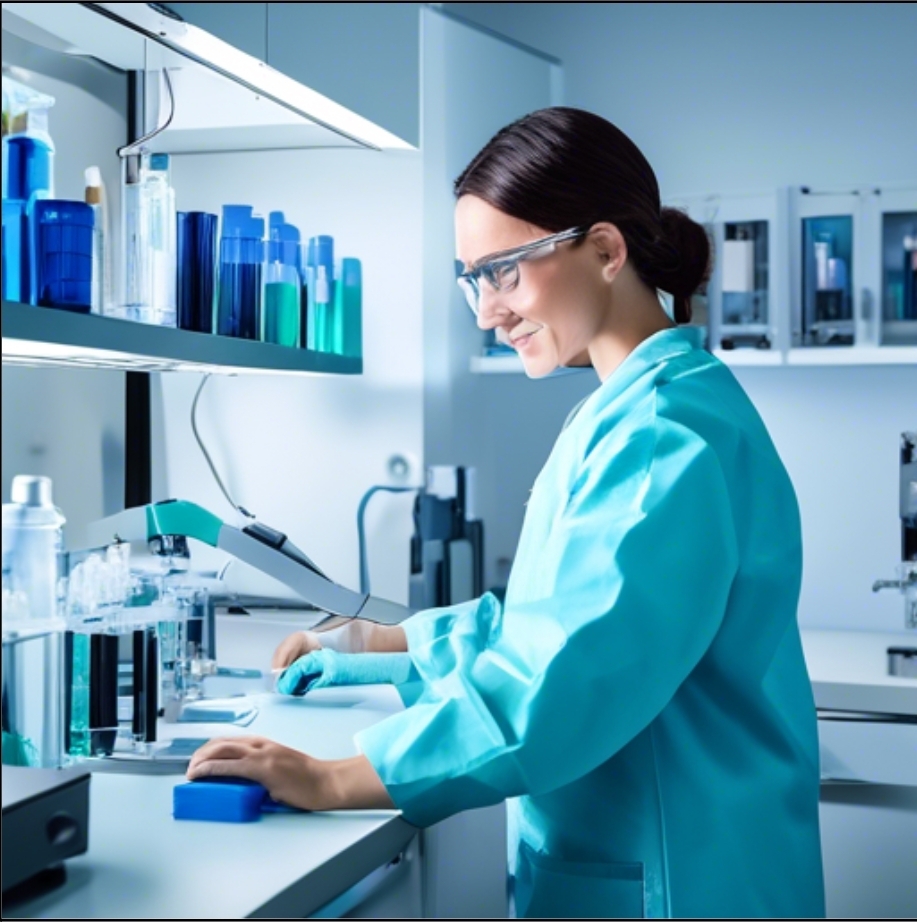
Pathology labs play a crucial role in healthcare. They aid in the diagnosis and treatment of various diseases. However, maintaining cleanliness and sterility within these labs is essential to ensure accurate results and prevent cross-contamination.
According to recent statistics from the World Health Organization (WHO), up to 15% of healthcare-associated infections worldwide can be attributed to contaminated medical equipment and surfaces. This highlights the critical importance of proper cleaning protocols in medical settings.
Let us dive into the essential practices and guidelines for ensuring thorough cleaning in pathology labs. From routine cleaning procedures to specialised techniques for handling hazardous materials, we'll explore the steps necessary to maintain a safe and hygienic environment in your lab.
Develop a Cleaning Schedule
Start by establishing a routine cleaning schedule. Divide tasks into daily, weekly, and monthly responsibilities. Daily tasks may include wiping down surfaces and equipment, while weekly tasks could involve more in-depth cleaning of specific areas. Monthly tasks may encompass deep cleaning and maintenance.
Train Lab Personnel
Educate your lab personnel on the importance of cleanliness and provide training on proper cleaning techniques. Make sure everyone understands the significance of their role in maintaining a hygienic environment. Regular training sessions can reinforce good habits and keep the team aligned with cleanliness standards.
Use the Right Cleaning Agents
Different lab surfaces and equipment may require specific cleaning agents. Consult with manufacturers' guidelines to ensure that you're using the appropriate cleaners for each material. Avoid harsh chemicals that could damage sensitive equipment or compromise the integrity of samples.
Prioritise High-Traffic Areas
Identify and prioritise high-traffic areas in the lab for more frequent cleaning. Benchtops, fume hoods, and shared equipment should be regularly disinfected to minimise the risk of contamination. Pay special attention to areas where biological samples are handled.
Implement a "Clean as You Go" Policy
Encourage a "clean as you go" mentality among lab personnel. Promptly clean up spills, discard waste properly, and sanitise workspaces after use. This proactive approach minimises the accumulation of dirt and prevents potential hazards. For quicker and healthier cleaning, you can pick from Livingstone's wide range of medical cleaning products.
Regularly Inspect and Replace Cleaning Supplies
Ensure that cleaning supplies such as wipes, gloves, and disinfectants are readily available. Regularly inspect and replace supplies to guarantee their effectiveness. Running out of essential cleaning materials can disrupt the cleaning routine and compromise the lab's cleanliness.
Establish Biosafety Levels
Depending on the nature of your work, establish biosafety levels for different lab areas. Assign appropriate cleaning and safety protocols based on the risk associated with each section. This not only enhances cleanliness but also reinforces safety measures.
Invest in Quality Trash Disposal Systems
Proper waste disposal is a fundamental aspect of lab cleanliness. Invest in quality trash bins with secure lids and liners to contain hazardous waste. Ensure that waste is segregated according to guidelines. Arrange for regular disposal to prevent the buildup of potentially harmful materials.
Regularly Calibrate and Maintain Equipment
Well-maintained equipment contributes to a cleaner lab environment. Implement a regular calibration and maintenance schedule for all lab equipment. This not only ensures accurate results but also extends the lifespan of the equipment.
Implement a Lab Coat and Personal Protective Equipment (PPE) Policy
Enforce a strict lab coat and PPE policy to prevent the spread of contaminants. Lab coats should be worn at all times, and PPE such as gloves and goggles must be used when handling potentially hazardous materials. Regularly clean and replace lab coats to maintain a high level of hygiene.
Conduct Regular Audits and Inspections
Periodically conduct audits and inspections to assess the effectiveness of your cleaning protocols. Solicit feedback from lab personnel and make adjustments as needed. This proactive approach allows you to address potential issues before they escalate.
Stay Informed about Industry Standards
Keep abreast of industry standards and guidelines for pathology labs. Stay informed about any updates or changes in best practices for cleanliness. Adapting to evolving standards ensures that your lab remains at the forefront of safety and cleanliness.
Conclusion
Proper cleaning is paramount in ensuring the safety of laboratory staff. This maintains sample integrity and produces reliable test results in pathology labs. By establishing clear protocols, using appropriate cleaning agents, and fostering a culture of cleanliness, pathology labs can uphold high standards of hygiene and biosafety.
Regular monitoring, inspections, and ongoing education are essential for continuous improvement. This ensures adherence to best practices in laboratory cleaning. By following these guidelines, pathology labs can create a safe and conducive environment for accurate diagnostics and research endeavours.
Disclaimer
The information provided is for general guidance and educational purposes. It does not constitute professional advice. Pathology labs should consult with relevant experts, adhere to local regulations, and consider specific lab requirements. The mention of specific products does not imply endorsement, and users should independently verify suitability for their needs.
Source: Story.KISSPR.com
Release ID: 922891
